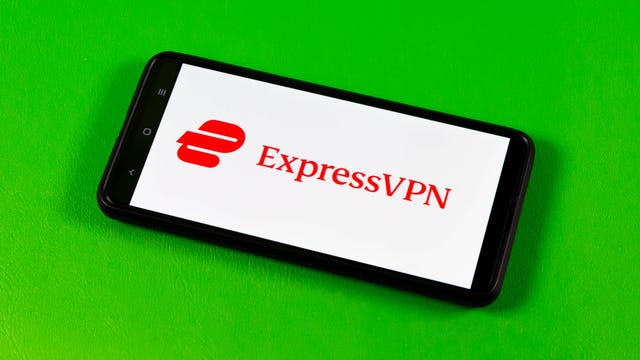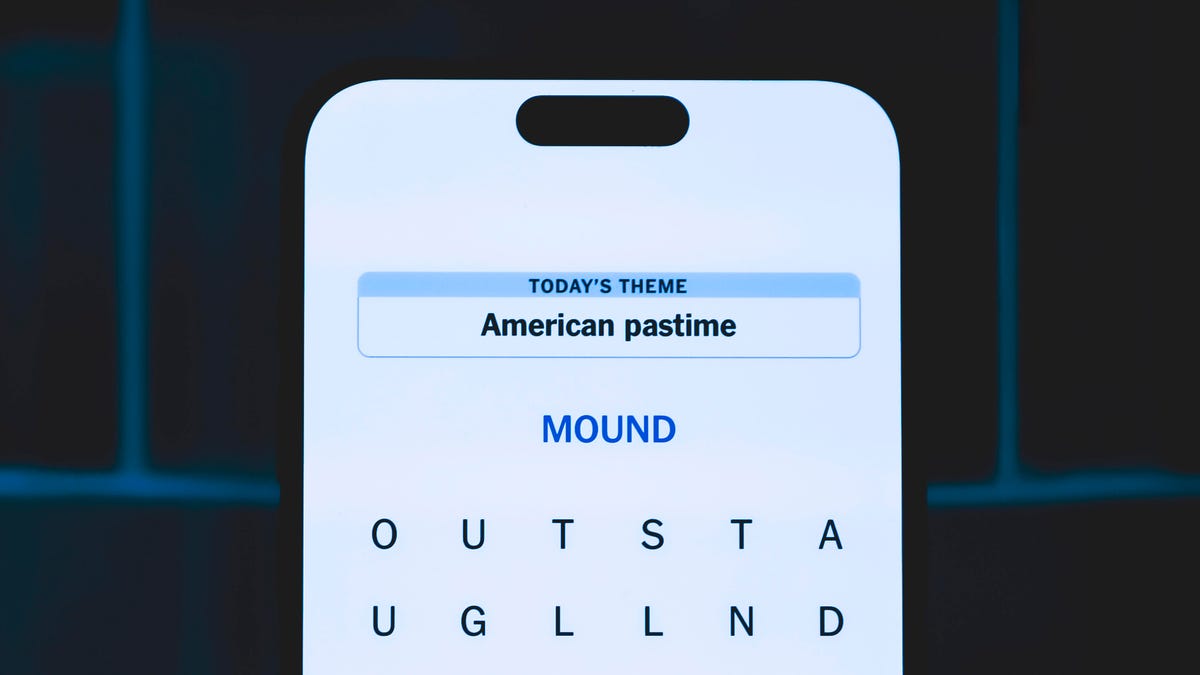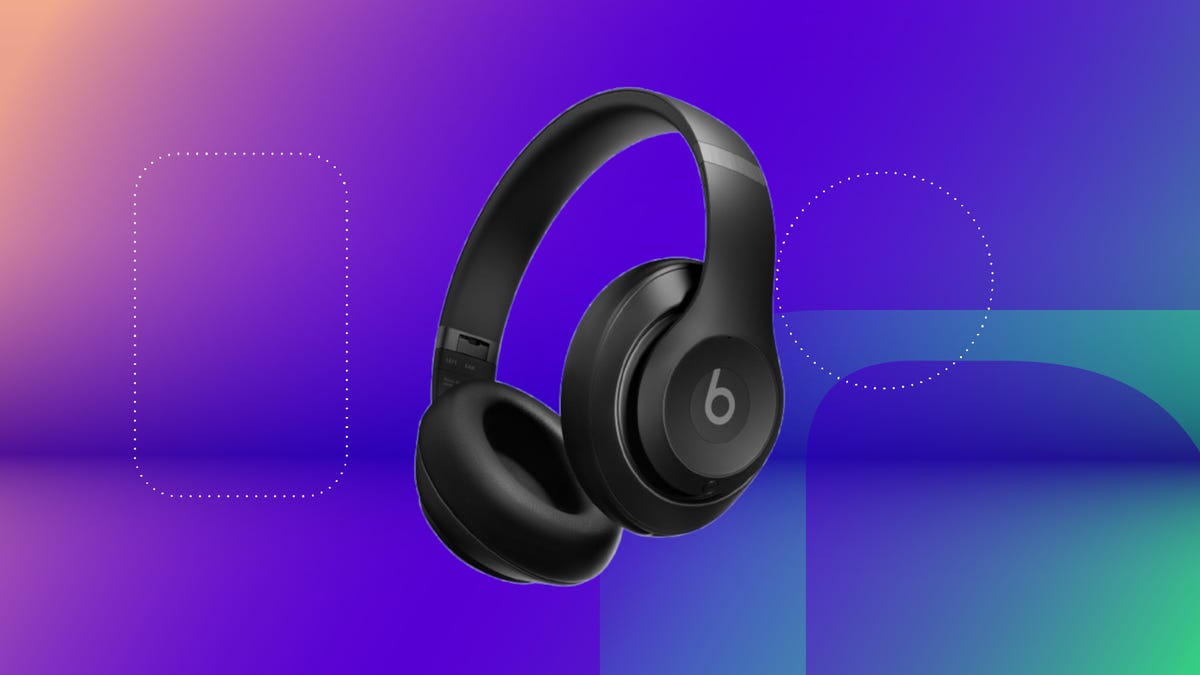Technologies
NHL Stanley Cup Final: How to Watch, Stream Golden Knights vs. Panthers Game 3 Tonight
The Vegas Golden Knights took both games on home ice and lead the series 2-0. Can the Panthers come back? Game 3 is tonight.

The Vegas Golden Knights have dominated the first two games of the Stanley Cup Final and only need two more wins to clinch their first championship.
Neither the Panthers nor the Golden Knights have previously won a Stanley Cup. The Florida Panthers last went to the Stanley Cup Final in 1996, when they were swept by the Colorado Avalanche. The Vegas Golden Knights made it to the Cup Final in their inaugural season in 2018, but lost in five games to the Washington Capitals.
Mathew Tkachuk came to the Panthers in a trade with the Calgary Flames last offseason and has dominated in key moments this postseason, but has been quiet so far in the Final. Tkachuk knows that tonight’s Game 3 will be important.
«This is by far the biggest game of our season. We know what has made us successful to this point. We’re definitely not going to shy away from that,» he told ESPN.
In order to make this a series, he and the Panthers will have to push back against Jack Eichel and a Vegas Golden Knights team that’s powered its way through the Winnipeg Jets, Edmonton Oilers and the Dallas Stars to reach their second Stanley Cup Final in six years.
Whether you live in the US or are looking to follow the NHL action from around the world, we’ll outline the best live TV streaming services to watch the 2023 Stanley Cup Final live, no matter where you are.

The Florida Panthers and the Vegas Golden Knights meet in the Stanley Cup Final.
Panthers vs. Golden Knights Game 3: When and where?
The series switches to Sunrise, Florida, for the next two games, as the Panthers host the Golden Knights at FLA Live Arena. The puck drops for Game 3 tonight at 8 p.m. ET or 5 p.m. PT in the US — that’s 1 a.m. BST in the UK, and 10 a.m. AEST in Australia on Friday, June 9.
What’s the schedule for the rest of the NHL Stanley Cup Final?
The schedule for the rest of the NHL Stanley Cup Final series is as follows. All games will air in the US on TNT.
• Thursday, June 8: Golden Knights at Panthers, 8 p.m. ET (Game 3, Golden Knights lead 2-0)
• Saturday, June 10: Golden Knights at Panthers, 8 p.m. ET (Game 4, if necessary)
• Tuesday, June 13: Panthers at Golden Knights, 8 p.m. ET (Game 5, if necessary
• Friday, June 16: Golden Knights at Panthers, 8 p.m. ET (Game 6, if necessary)
• Monday, June 19: Panthers at Golden Knights, 8 p.m. ET (Game 7, if necessary)
How to watch Panthers vs. Golden Knights Game 3 online from anywhere using a VPN
If you find yourself unable to view the game locally, you may need a different way to watch the game — that’s where using a VPN can come in handy. A VPN is also the best way to stop your ISP from throttling your speeds on game day by encrypting your traffic, and it’s also a great idea if you’re traveling and find yourself connected to a Wi-Fi network, and you want to add an extra layer of privacy for your devices and logins.
With a VPN, you’re able to virtually change your location on your phone, tablet or laptop to get access to the game. Most VPNs, like our Editors’ Choice, ExpressVPN, make it really easy to do this.
Using a VPN to watch or stream sports is legal in any country where VPNs are legal, including the US, UK and Canada, as long as you have a legitimate subscription to the service you’re streaming. You should be sure your VPN is set up correctly to prevent leaks: Even where VPNs are legal, the streaming service may terminate the account of anyone it deems to be circumventing correctly applied blackout restrictions.
Looking for other options? Be sure to check out some of the other great VPN deals taking place right now.
ExpressVPN is our current best VPN pick for people who want a reliable and safe VPN, and it works on a variety of devices. It’s normally $13 per month, and you can sign up for ExpressVPN and save 49% plus get three months of access for free — the equivalent of $6.67 per month — if you get an annual subscription.
Note that ExpressVPN offers a 30-day money-back guarantee.
Livestream Panthers vs. Golden Knights Game 3 in the US
This season marks the first time in decades that the Stanley Cup Final will be broadcast entirely on cable television, with the series being shown live on TNT and TruTV, and TBS showing all but Game 5.
How can I stream the games on my phone?
If you have a live TV streaming service (like Sling TV, YouTube TV or one of the ones below), you can use its app. If you have cable or satellite, you can use your provider’s app or watch via the TNT app. Click the person icon to sign in with your TV provider.
Sling TV’s Orange plan includes TNT and TBS in most major markets and costs $40 a month, with $10 off your first month.
TruTV is meanwhile available via Sling’s Blue package, which comes in at a slightly more expensive $45 per month albeit, but is also offered with a $10 off discount for the first month.
Hulu Plus Live TV costs $70 a month and carries TBS, TruTV and TNT.
YouTube TV costs $73 a month and offers TBS, TruTV and TNT.
DirecTV Stream is expensive. It’s the priciest of the five major live TV streaming services. Its cheapest, $65-a-month Entertainment package includes TBS, TruTV and TNT. You can use its channel lookup tool to see which local channels and RSNs are available in your area.
It is worth noting that DirecTV has an additional $15 «advanced receiver service» fee that automatically applies and is added on to the sticker price, which makes the Entertainment package $80 per month.
Looking for more information? Check out our live TV streaming services guide.
Livestream Panthers vs. Golden Knights Game 3 in Canada for free
The great news for Canadian ice hockey fans is that every game of the 2023 Stanley Cup Final series will be shown on free-to-air CBC Sports. Pay TV provider Sportsnet will also be broadcasting every game.
You can stream the entirety of the Panthers vs. Golden Knights series live on CBC’s streaming service CBC Gem. There’s also the option to pay CA$5 per month for ad-free access to the service.
Livestream Panthers vs. Golden Knights Game 3 in the UK
Viewers in the UK can watch every 2023 Stanley Cup Final game live on Viaplay. This third game will be broadcast on Viaplay Sports 1, with the puck drop set for 1 a.m. BST in the early hours of Friday morning.
You’ll need to be a subscriber to Viaplay’s Total package to watch its Stanley Cup Final coverage, which is priced at £15 per month or £144 per year.
Viaplay currently has the UK broadcast rights to the United Rugby Championship, La Liga soccer, plus the IIHF Ice Hockey World Championship and Champions Hockey League.
Livestream Panthers vs. Golden Knights Game 3 in Australia
Select games from this year’s Stanley Cup Final can be watched Down Under on ESPN via Foxtel. If you’re not a Fox subscriber, your best option is to sign up for streaming service Kayo Sports.
A Kayo Sports subscription starts at AU$25 a month and lets you stream on one screen, while its Premium tier costs AU$35 a month for simultaneous viewing on up to three devices.
The service gives you access to a wide range of sports including F1, NRL, NFL, F1 and MLB, and there are no lock-in contracts.
Better still, if you’re a new customer, you can take advantage of a one-week Kayo Sports free trial.
Quick tips for streaming the Stanley Cup Final using a VPN
- With four variables at play — your ISP, browser, video streaming provider and VPN — your experience and success when streaming Stanley Cup Final games may vary.
- If you don’t see your desired location as a default option for ExpressVPN, try using the «search for city or country» option.
- If you’re having trouble getting the game after you’ve turned on your VPN and set it to the correct viewing area, there are two things you can try for a quick fix. First, log into your streaming service subscription account and make sure the address registered for the account is an address in the correct viewing area. If not, you may need to change the physical address on file with your account. Second, some smart TVs — like Roku — don’t have VPN apps you can install directly on the device itself. Instead, you’ll have to install the VPN on your router or the mobile hotspot you’re using (like your phone) so that any device on its Wi-Fi network now appears in the correct viewing location.
- All of the VPN providers we recommend have helpful instructions on their main site for quickly installing the VPN on your router. In some cases with smart TV services, after you install a cable network’s sports app, you’ll be asked to verify a numeric code or click a link sent to your email address on file for your smart TV. This is where having a VPN on your router will also help, since both devices will appear to be in the correct location.
- And remember, browsers can often give away a location despite using a VPN, so be sure you’re using a privacy-first browser to log into your services. We normally recommend Brave.
Technologies
Today’s NYT Strands Hints, Answers and Help for Oct. 27, #603
Here are hints and answers for the NYT Strands puzzle for Oct. 27, No. 603.

Looking for the most recent Strands answer? Click here for our daily Strands hints, as well as our daily answers and hints for The New York Times Mini Crossword, Wordle, Connections and Connections: Sports Edition puzzles.
Today’s NYT Strands puzzle is fun, but some of the answers are long and quite tough to unscramble.. So if you need hints and answers, read on.
I go into depth about the rules for Strands in this story.
If you’re looking for today’s Wordle, Connections and Mini Crossword answers, you can visit CNET’s NYT puzzle hints page.
Read more: NYT Connections Turns 1: These Are the 5 Toughest Puzzles So Far
Hint for today’s Strands puzzle
Today’s Strands theme is: Witch way?
If that doesn’t help you, here’s a clue: What Harry Potter finds out he is.
Clue words to unlock in-game hints
Your goal is to find hidden words that fit the puzzle’s theme. If you’re stuck, find any words you can. Every time you find three words of four letters or more, Strands will reveal one of the theme words. These are the words I used to get those hints but any words of four or more letters that you find will work:
- CARD, DINT, RANT, MULE, MALE, HARM, MALT, TALE, TINT, CANT, ROAD
Answers for today’s Strands puzzle
These are the answers that tie into the theme. The goal of the puzzle is to find them all, including the spangram, a theme word that reaches from one side of the puzzle to the other. When you have all of them (I originally thought there were always eight but learned that the number can vary), every letter on the board will be used. Here are the nonspangram answers:
- WAND, CHARM, AMULET, POTION, INCANTATION, CAULDRON.
Today’s Strands spangram
Today’s Strands spangram is WIZARDRY. To find it, look for the W that’s three letters to the right on the top row, and wind down.
Quick tips for Strands
#1: To get more clue words, see if you can tweak the words you’ve already found, by adding an «S» or other variants. And if you find a word like WILL, see if other letters are close enough to help you make SILL, or BILL.
#2: Once you get one theme word, look at the puzzle to see if you can spot other related words.
#3: If you’ve been given the letters for a theme word, but can’t figure it out, guess three more clue words, and the puzzle will light up each letter in order, revealing the word.
Technologies
Turn Your Pet Photos Into Cute iPhone Emoji in a Few Easy Steps
You already have hundreds of photos of your pets so you might as well make them into emoji.

I love my dog, Cinnamon Toast Crunch. She’s brown and white and loves to go on walks and I take every opportunity to show her to the world. And with the Live Stickers iPhone feature, I can turn photos of her into emoji and stickers, and then text them to everyone I know.
Apple introduced Live Stickers in iOS 17 as an evolution of the tap-and-lift feature from iOS 16, which lets you cut out subjects from photos and Live Photos. Now, by saving those cutouts as emoji and stickers of pets, family and friends, you can send endless cuteness to others.
Don’t miss any of our unbiased tech content and lab-based reviews. Add CNET as a preferred Google source.
Here’s how to transform your photos into emoji and stickers to send in Messages and other apps.
How to make Live Stickers and emoji from pictures
1. Open your Photos app.
2. Tap the photo you want to turn into an emoji or sticker.
3. Tap and hold the item in the photo you want to turn into an emoji or sticker until you see the white outline.
4. Tap Add Sticker.
Your iPhone will then add the Live Sticker to your Stickers drawer and appear in your emoji keyboard. If you tap the new sticker, you’ll be given the options to Rearrange, Add Effect or Delete it. Tapping Add Effect will let you add an effect to your sticker, like a white outline, to make it look even more like a sticker.
The next time you go into Messages, you can use your new sticker as an emoji by tapping the emoji keyboard in the bottom-left corner of your screen, tapping the folded-over circle and tapping the emoji you want to use.
According to Apple, you can use your new Live Sticker anywhere you can access emoji. I tried to use my Live Stickers on the messaging app Slack, but they wouldn’t appear in the app. I also couldn’t access my Live Stickers in some third-party apps, like TikTok, so you might run into some issues when using your Live Stickers outside of Apple apps and devices.
For more iOS news, here’s my review of iOS 26, how to enable call and text screening in the OS and all the new ringtones on your iPhone. You can also check out our iOS 26 cheat sheet
Technologies
Today Only: Get the Top-Rated Beats Studio Pro Headphones for Just $100
Act fast to get these factory-reconditioned headphones while they’re cheap.

While there are plenty of amazing headphone options out there, only a few of them end up on our list of the best headphones.A great example of some of the best around are the excellent Beats Studio Pro headphones, but they come with a price tag to match.
Right now, you can pick yourself up the Beats Studio Pro headphones from Woot for just $100 if you use the code BEATS20 at checkout. These ones are factory reconditioned, which is basically another way of saying refurbished to a high standard, but the deal is only on until the end of the day, so you’ll need to be quick to get the discount.
In his review of the Beats Studio Pro headphones, CNET’s audio expert David Carnoy said that, «Overall, these are very good performing headphones that I’ve been happy to add to my headphone rotation.» He noted that the price was often the biggest sticking point, but when you’re getting them with such a hefty discount, it’s hard not to view that as a non-issue.
Hey, did you know? CNET Deals texts are free, easy and save you money.
There’s no doubt that this is one of the best headphone deals on right now, it’s just a shame it’s only on until the end of the day. Make sure you act on this as soon as possible to avoid missing out on it, and don’t forget to use the code BEATS20 to get the full amount off.
HEADPHONE DEALS OF THE WEEK
-
$300 (save $51)
-
$299 (save $151)
-
$220 (save $180)
Why this deal matters
Beats Studio Pro headphones are literally some of the best headphones you can buy, but their price tag is hard for some people to swallow at $350. This is a rare chance to get them for far cheaper, and the factory reconditioned models are often nearly as good as new, too.
Join Our Daily Deals Text Group!
Get hand-picked deals from CNET shopping experts straight to your phone.
By signing up, you confirm you are 16+ and agree to receive recurring marketing messages at the phone number provided. Consent is not a condition of purchase. Reply STOP to unsubscribe. Msg & data rates may apply. View our Privacy Policy and Terms of Use.









